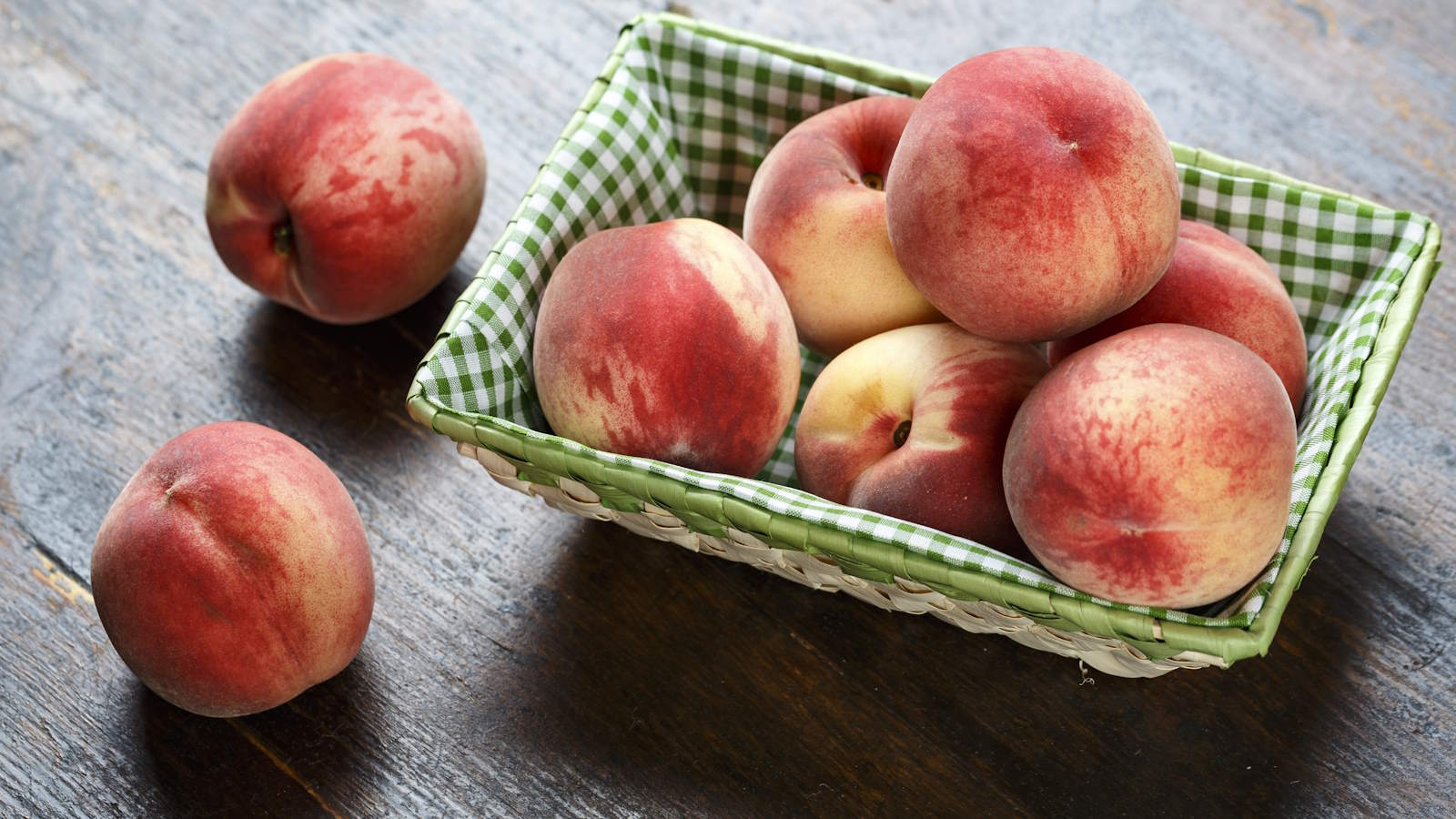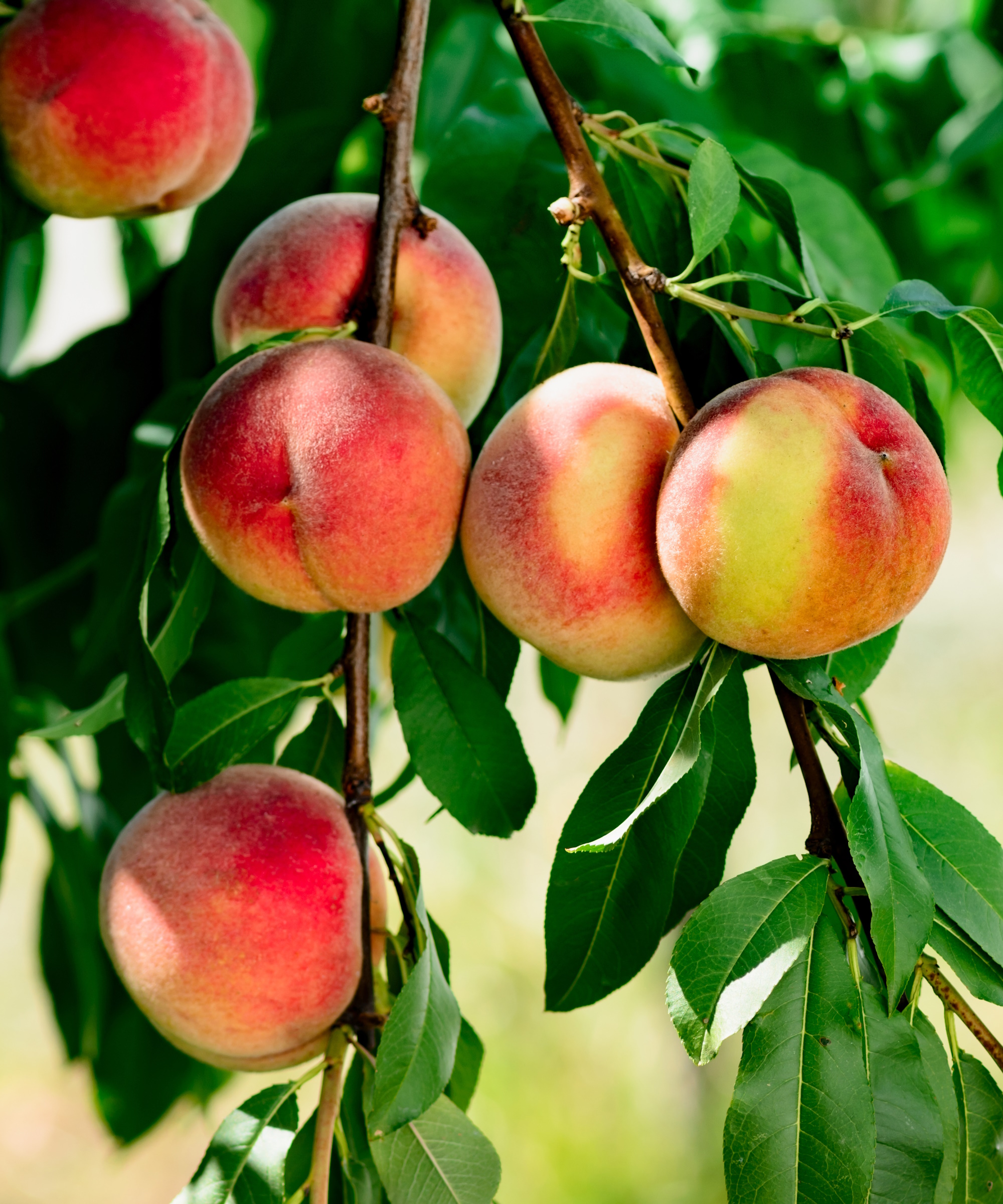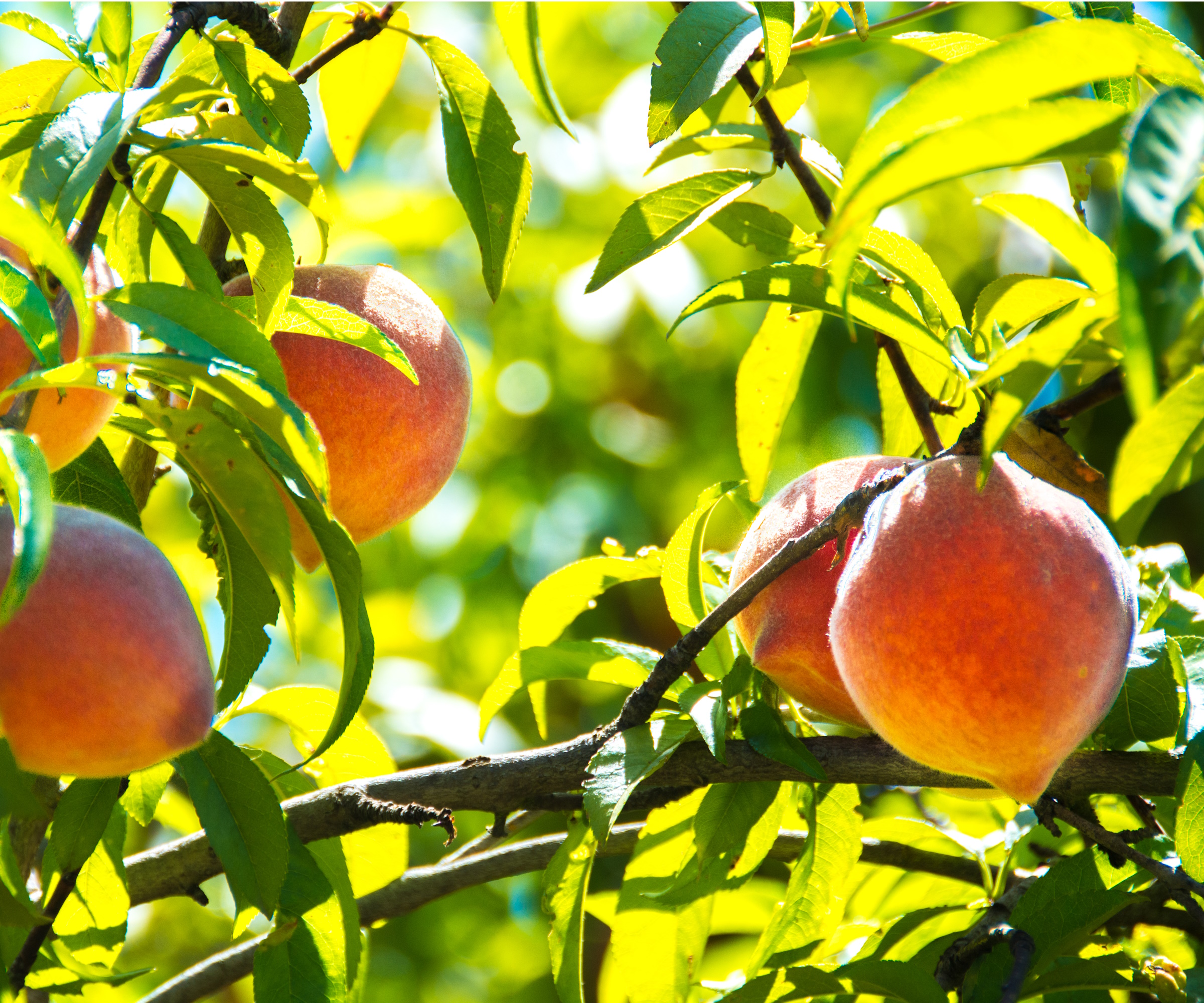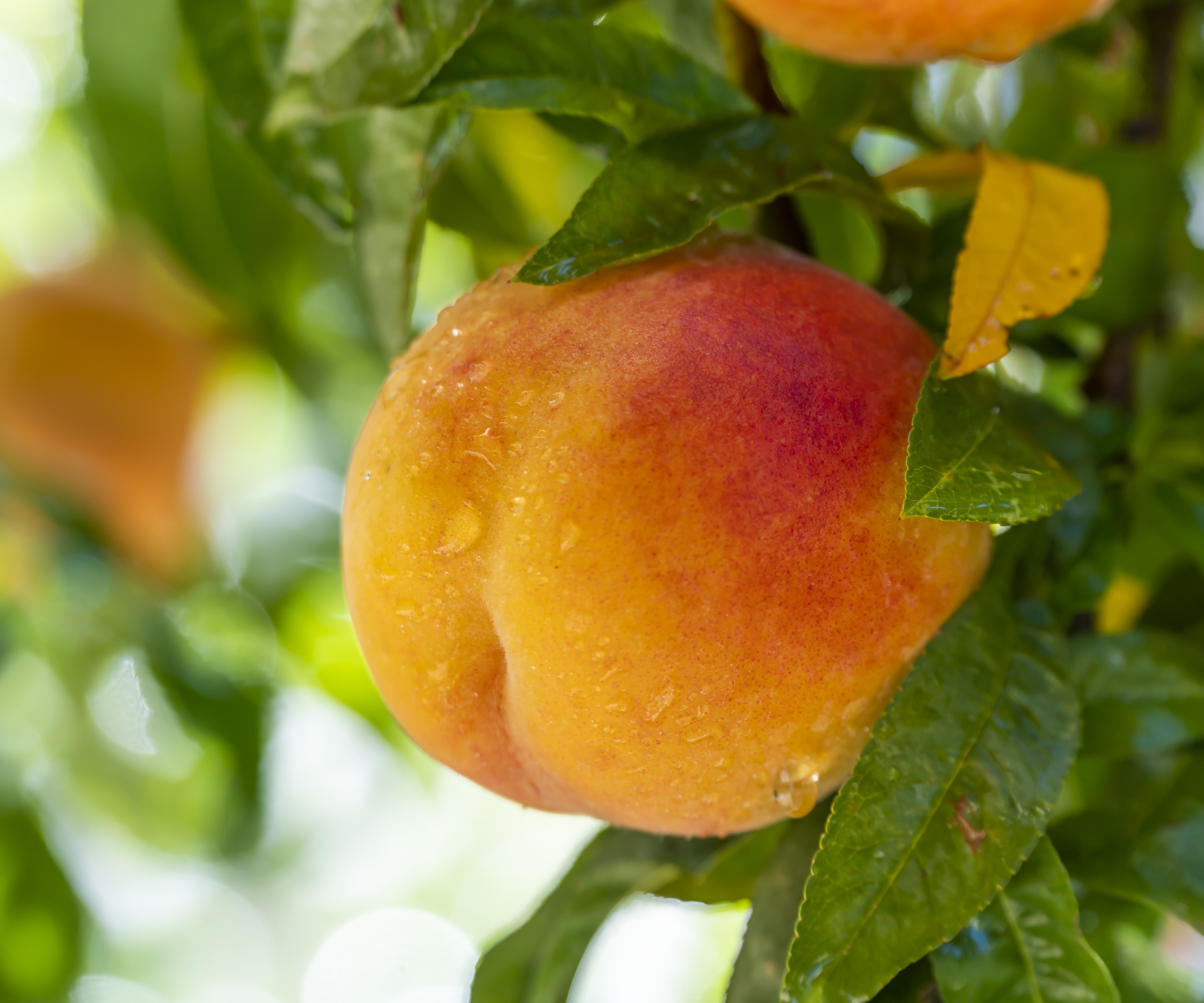
Imagine biting into a fresh, sweet, and juicy homegrown peach picked straight off the tree, still warm from the rays of a hot summer’s day. It sounds idyllic - yet it is achievable in many backyards.
The key to the sweetest and tastiest peaches is to let them fully ripen on the peach tree. The color, feel, and smell of the fruits can indicate they are ripe and it is time to harvest peaches - doing it carefully to avoid damaging the precious fruit.
I grew and harvested peaches for chefs at a high-caliber restaurant in the UK and the smell of the fresh fruits as I picked them was a joy. It was important to pick only the ripe peaches and leave others to finish ripening on the tree, as that guaranteed their sweetness.

Our guide to picking peaches
Peach trees are adored for their gorgeous spring blossom and the succulent fruit, whether to eat straight from the tree or to use in pies or cobblers. Sun and warmth are key to having success growing and caring for peach trees, they adore the sun and need it to ripen the sweet fruits.
Peach trees available for sale at nurseries and garden centers are grafted plants, however, you can grow a peach tree from seed with a little care and dedication. However you grow and plant your fruit trees, patience is required as it can take a few years to get those first fruits to appear.
Whether you grow these trees in the ground or grow the fruit trees in pots - with dwarf varieties of peaches suited for large containers - we reveal the signs of ripe fruit and some tips to help you pick them correctly.
When to harvest peaches

The season for picking peaches runs from late June through August, depending on your location and US hardiness zone. Brie Zettl, director of horticultural production at Stark Bro's Nurseries and Orchards, has done a lot of peach harvesting at a farm in Missouri in late spring and early summer, and says that color is ‘the biggest indicator’ of ripeness. While aroma, feel, and taste are also good measures, color should be the primary yardstick.
‘You don't want to see any green on the skin; the fruit should be a nice yellow color or have a red blush depending on the variety,’ adds Sheryl Normandeau, co-author of ‘The Prairie Gardener’s Go-To for Fruit. Fruit with green on the skin will not be as sweet as a fully matured peach whose color has completely transformed.
It is always best to let peaches ripen completely on the tree, however, some growers may pick the fruits earlier to avoid damage from birds or small mammals. Picking earlier can offer advantages, however, Brie Zettl claims the flavor won’t measure up.
‘We sold tree-ripened peaches that only had about a week of shelf life,’ says Brie. ‘Commercially they harvest very firm peaches that do not taste sweet almost at all - this gives the longest shelf life as you can ripen them up as you need to, but they will never taste as sweet as a tree-ripened peach.’
Ripe peaches should be soft and have a slight give when squeezed, green peaches will be much firmer and are best left to ripen on the tree. As for another indicator of ripeness, Sheryl Normandeau adds: ‘You'll probably be able to smell the sweet fragrance of the ripening fruit while you are standing near the tree. When in doubt, pick one and do a taste test!’
How to harvest peaches

Peaches can bruise very easily, so it is important to handle them with care to prevent any harvesting mistakes that can damage the harvest. Each ripe peach is best picked by hand, or very carefully with a fruit picker pole if the fruits are too high to reach.
All the fruits on a peach tree will reach peak ripeness at different times - they will not all be ready simultaneously. Fruits start ripening first at the peach tree's top and outer edges, and it will take a few pickings to harvest the crop completely.
The peach should separate from the tree with a simple twist. Take a ripe peach in your hand and carefully twist the fruit while gently pulling away from the branch. A ripe peach ready to be picked should come away easily, if you feel tension that won’t give then it is best to leave the fruit on the tree.
‘Do not apply pressure to the fruit as you pick and gently pack them into a single layer in a flat basket,’ says Sheryl Normandeau. ‘Peaches ready for harvesting should come away very easily from the tree when they are picked, separating the fruit from the stem. If the fruit is too soft and rotting on the tree, it's overripe and not suitable to eat.’
Any peaches harvested before being fully ripe need to be left to finish ripening at room temperature. They should not be placed in a refrigerator until they reach peak ripeness.
Katie Brines from Stark Bro's recommends: ‘Instead, place them on newspaper in a single layer in a cool, dark place. Check their softness daily by gently feeling them, being careful not to bruise them with excessive pressure.’
Fully ripe peaches are best eaten quickly after harvesting, however, if you can resist biting straight into them from the tree, they can be stored in a refrigerator for around 7-10 days.
The fruit tree picker length is adjustable to be 3ft-5ft and has a metal twist-on head basket with a foam pad insert to prevent bruising fruit
FAQs
Do peaches ripen after picking?
Peaches can continue to ripen after they have been picked from the tree. They won’t taste as sweet as fruits that ripened fully on the tree, but the homegrown fruits will still likely surpass the peaches you get from stores. The peaches want to be ripened at room temperature, away from direct sunlight, and it may only take a few days. They can be laid out in a single layer, as recommended by Katie Brines, or placed into a brown paper bag to speed up the process.
Can you eat an unripe peach?
A green and unripe peach is edible and can be eaten raw or cooked, however, the flavor will not be as sweet or juicy as a ripe peach. This is because the sweetness of a peach comes from the sugar levels developing as the fruit ripens.
When you plant a peach tree in your yard, expect it to take three years to start flowering and fruiting. The first years focus on developing a strong and healthy root network. Once it does start producing a crop, you can expect an annual harvest for the next 10-12 years - and now you know when and how to pick the peaches, not a single fruit should be wasted.







